In Windows, administrative shares happen to be special hidden shares that remote access and management of the file systems for administrators. Generally, the C$ share grants access to the C: drive, the primary storage drive for most Windows systems. The error Can’t access computer drive remotely via C$ indicates that the system has issues establishing remote access connection to the C: of a particular computer using the administrative share C$. This error is commonly reported in a distributed environment, and this article explores its general causes and possible solutions.
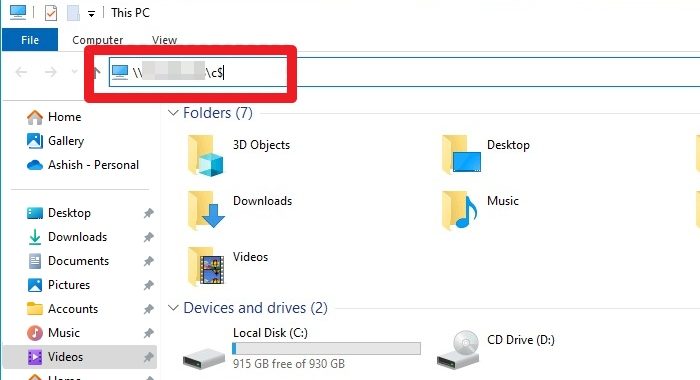
Can’t access computer drive remotely via C$ – Possible Causes
- Network Connectivity Issues: Lack of reliable network connection could be one of the prime causes of the error. Since this is an error associated with a connected environment, faulty cables, incorrect router configurations, network congestion, or any event disrupting network activities can lead to the error.
- Permission Issues: The user attempting to access the C$ remotely doesn’t have the necessary permission or privilege, which can lead to an error. Without proper permission, the system will deny access to the said share. Hence, the user needs to ensure that they are a member of the Admin group or enjoy admin privileges.
- Name Resolution Problems: Computers cannot locate each other without proper name resolution or DNS issues, which can lead to failed remote access attempts.
- Group Policy Settings: If the network’s Group Policy settings don’t allow remote access to Administrators.
- Service and Share Configuration: The host system cannot establish the connection if the relevant Windows service (LanmanServer service) is not running or the path to the C$ share is misconfigured.
Can’t access computer drive remotely via C$ error
Make sure you are using an administrator account for these suggestions:
- Network connectivity and setting checks
- Registry settings modifications
- Admin shares permission
- Verification of shared path
1] Network connectivity and setting checks
Since the error pertains to accessing a remote system, the very first step of troubleshooting would involve checking the network connectivity.
Inconsistencies in connectivity can be a prime cause for the issue. Hence, checking the Network icon in the System Tray can reveal the status of the connection. If the network connectivity is available, the next step involves enabling the Network Discovery and the File and Printer Sharing options by following the below-mentioned steps:
- Open Settings using Win + I
- Navigate to Network and Internet > Advanced network settings
- Click on Change Advanced Sharing Settings
- Click Turn On Network Discovery in the following window and turn on File and Printer Sharing.
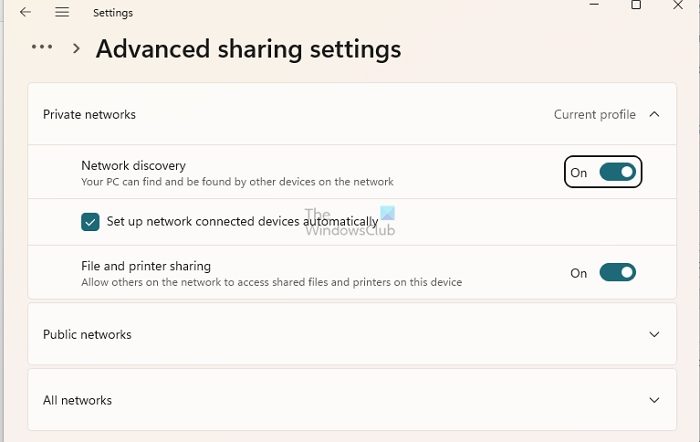
2] Registry settings modifications
To modify the registry settings,
- Open the Run dialogue box, type regedit, and click OK.
- Navigate to
HKEY_LOCAL_MACHINE\SOFTWARE\Microsoft\Windows\CurrentVersion\Policies\System
- Right-click on the blank area on the right pane and click New>DWORD Value (32-bit)
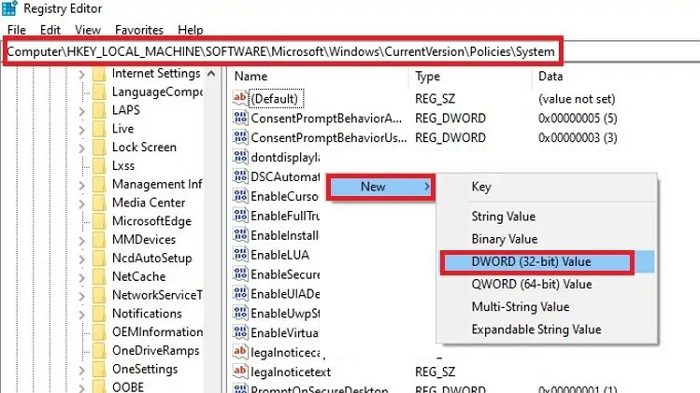
- Name the value as LocalAccountTokenFilterPolicy.
- Set its value to 1.
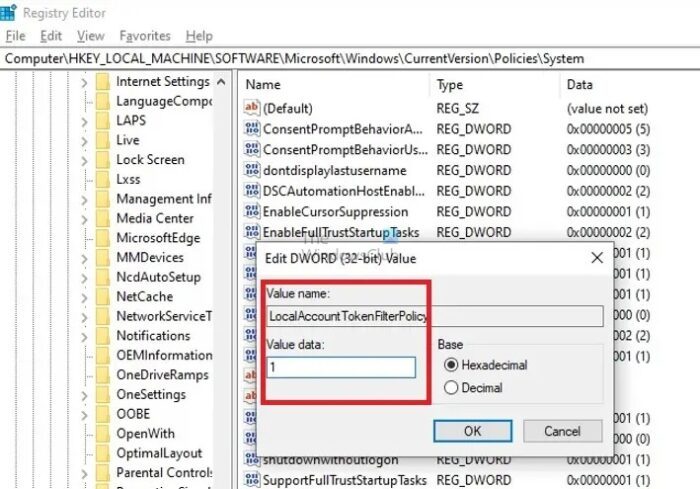
- Restart the computer for the changes to take effect.
The LocalAccountTokenFilterPolicy registry entry is used to modify the UAC behavior for admin tasks that are executed remotely. Setting its value to 1 allows remote users of the Admin Group to have the same Admin rights as if they are handling it physically.
3] Admin shares permission
Generally, all users with Admin rights in a specific network have permission to access the root drive (C:) for all the systems within the network. However, Admin shares are not displayed on the remote system if checked from the File Explorer. The list of admin shares on the remote computer can be checked by following the below-mentioned steps:
Open the Windows Terminal by typing WT in the Desktop Search Bar
Right-click on the Windows PowerShell and click Run As Administrator.
Type the below-mentioned commands to check for the list of available Admin shares
net view \\computername /all
4] Verification of shared path
At times, incorrect share paths can also lead to the said error. Hence, reconfiguring the same to ensure the right path is entered can help resolve the error. To re-create the shared path,
- Open the Map Network Drive by clicking on the Three dots (…) beside the View option in Windows Explorer.
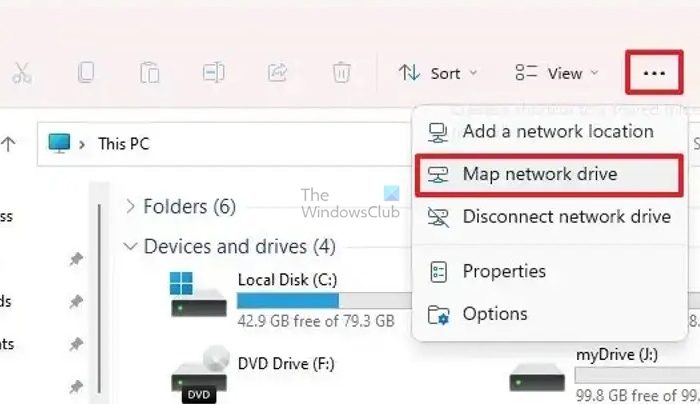
- In the ensuing window, click Browse to define the path for the remote drive.
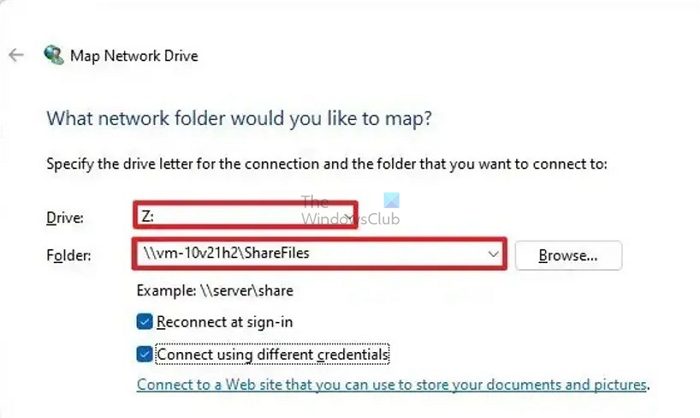
- Choose any one of the options, Re-connect at Sign-in, or Connect with different credentials, as applicable, and click Finish.
Alternatively, the mapping can also be done from the Windows Terminal by following the below-mentioned steps:
Open the Windows Terminal by typing WT in the Desktop Search Bar
Right-click on the Windows PowerShell and click Run As Administrator.
Type the below-mentioned commands for mapping
NET USE z:\[computer name]\c$
to map the relevant drive
OR
NET USE z:\[computer name]\c$\folder1\folder2
to map a particular folder or sub-folder under the same drive.
Once mapped, try to connect to the remote system to check whether the error has been resolved. Please ensure the full name for the relevant computer name is entered in the above command.
To fix the issue at hand, it’s important to approach it step by step. This means checking things like network connectivity, share path verification, and drive mapping. By doing so, users can quickly the problem and regain access to remote computer drives.
How do I enable C$ share?
To access the properties of the C drive, right-click on it and select Properties. In the Properties box, navigate to the Security tab and ensure that the Administrator’s group has complete privileges. If you want to share the C drive with a specific account, click on Sharing and then select Advanced Sharing. In the Advanced Sharing dialog box, choose to share this folder, give it a name, and set user permissions as required.
How do I block C$ access in Windows?
Open File Explorer, then right-click on the drive you want to restrict access to and select Properties. Next, navigate to the Security tab and click on the Edit button. You will be prompted to enter the administrator password. In the new window, you will see the Permissions for Users box. Uncheck all the boxes under the Allow section to deny users access to the drive.
Leave a Reply